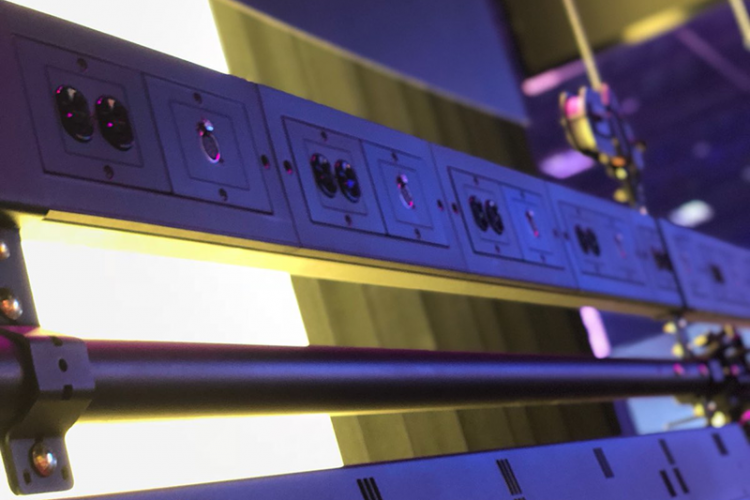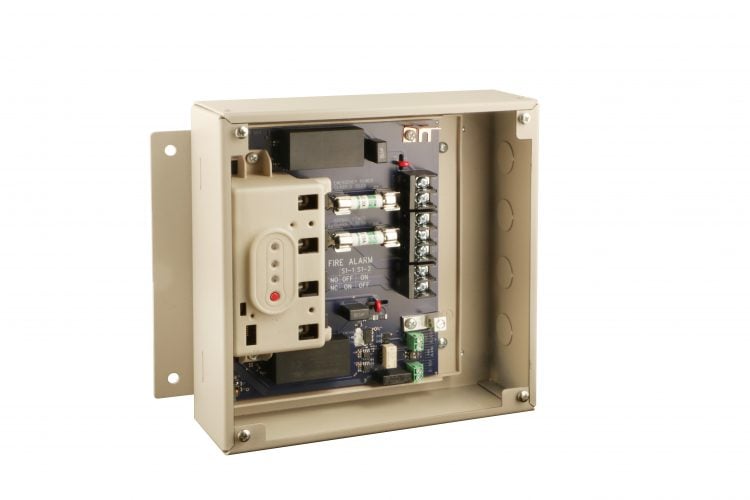Electrical diversity is a requirement in most entertainment lighting systems, but one that is often well-hidden from users. This post will explore diversity requirements and what they mean to lighting users.
The case of the missing warning label
If you work with entertainment lighting systems, perhaps you have come across a label like this one when plugging in a lighting fixture to a connector strip:
No? Is that a new one for you? If so, you’re not alone; I can’t ever recall bumping into such a label, even after more than 45 years in the lighting industry. And, surely, I would at least have remembered the RISK OF FIRE part of the statement! Yet, if the connector strip or drop box you’re plugging into is fed by a flexible multiconductor cable, it almost certainly has the operational limitation described by the warning label. Moreover, if you’re using a portable, six-circuit, 20 amp Socapex-type multicable feeding a breakout assembly, it also has the same limitation. And yet, this label does not appear anywhere.
How can this be? If an operational instruction is important enough to carry a fire warning, why is that label missing? And why is the requirement often not understood by users? For the answers, keep reading…
What is Electrical Diversity?
A number of years ago, I wrote an article explaining electrical diversity: Understanding Hidden Electrical Diversity in Entertainment Lighting Systems, which includes a discussion of Code details. But for this discussion, I want to focus on the meaning of electrical diversity, and the reasons for the missing label described above.
Electrical diversity is the condition where not all circuits in a cable are fully loaded to their individual rating, or not all circuits in a cable are simultaneously energized.
 Electrical diversity is normal for entertainment lighting systems, because circuits are rarely loaded to their full rating, and the nature of cueing for a production means that all circuits are rarely energized simultaneously.
Electrical diversity is normal for entertainment lighting systems, because circuits are rarely loaded to their full rating, and the nature of cueing for a production means that all circuits are rarely energized simultaneously.
As explained in my earlier article, this diversity condition allows a system designer or installer to take advantage of certain provisions of the National Electrical Code® which allow higher ampacity ratings for conductors in a cable where load diversity is 50% minimum. That means that cables can be of a smaller gauge than normally required providing that the simultaneously energized load fed by the cable does not exceed 50% of the aggregate maximum rating of all the circuits in the cable. A connector strip and drop box are perfect examples of where this diversity rating is applied. Likewise, a six-circuit Socapex-type multicable also uses the diversity rating.
Why is that warning label missing?
When a manufacturer builds a connector strip or drop box, it is typically Listed to UL Standard 1573 Stage and Studio LuminaIres and Connector Strips. A terminal strip is provided to allow fully rated conductors to feed the connector strip.
The assumption is that the system designer or installer will use fully-rated cables to feed the strip, which means that the dire warning label above is not required by UL1573. These cables feeding the strip are almost never supplied as an integral part of the strip. However, in reality, a system designer would be unlikely to actually use fully-rated cables. For example, a 20-circuit connector strip might require 20 separate 12 gauge, 3 conductor cables to achieve fully rated connection. Instead, the system designer or installer uses a 42-conductor cable and applies the 50% diversity ratings from the NEC, as allowed by table 520.44(C)(3)(a).
Invariably, the label required by UL1573 under this condition never makes it onto the connector strip. The result is that the end-user of the system is completely unaware of the 50% diversity requirement.
What does 50% diversity actually mean to the production electrician?
This is best illustrated by two examples:
| Typical connector strip fed by 42-conductor #10 AWG 90o C cable | |
| 20 Circuits rated 20 amps each, maximum aggregate rating: | 400 amps total |
| Maximum simultaneously-energized load after ampacity adjustment factor–60% of 47A starting conductor ampacity with 40 current-carrying conductors from NEC table 520.44(C)(3)(a) and 50% diversity required by NEC table 520.44(C)(3)(a): | 282 amps total / 14.1 amps per circuit |
| Typical 6-circuit #12 AWG 90o C Socapex-type Multicable | |
| 6 circuits @ 20 amps each, maximum aggregate rating: | 120 amps total |
| Maximum simultaneously-energized load after ampacity adjustment factor –70% of 35A starting conductor ampacity with 12 current-carrying conductors from NEC table 520.44(C)(3)(a) and 50% diversity required by NEC table 520.44(C)(3)(a): | 73.5 amps total / 12.25 amps per circuit |
You can see that the 50% diversity requirement, coupled with the applicable ampacity adjustment factor for more than three current-carrying conductors in the cable, means that the allowable simultaneously energized load is far below the total rating of the circuits in question.
Where might the warning label appear?
The most likely equipment to begin sporting the dire warning label are those devices that are listed with their multicable as a complete assembly. A good example would be a packaged stage lighting hoist including a connector strip and the cable feeding it, as well as a cable handling system.
So, if you see such a label in the near future, don’t panic – you now know why it’s there.
Do you have questions about electrical Codes and best practices that you’d like to see covered on this blog? Let us know in the comments or at blog@etcconnect.com.





